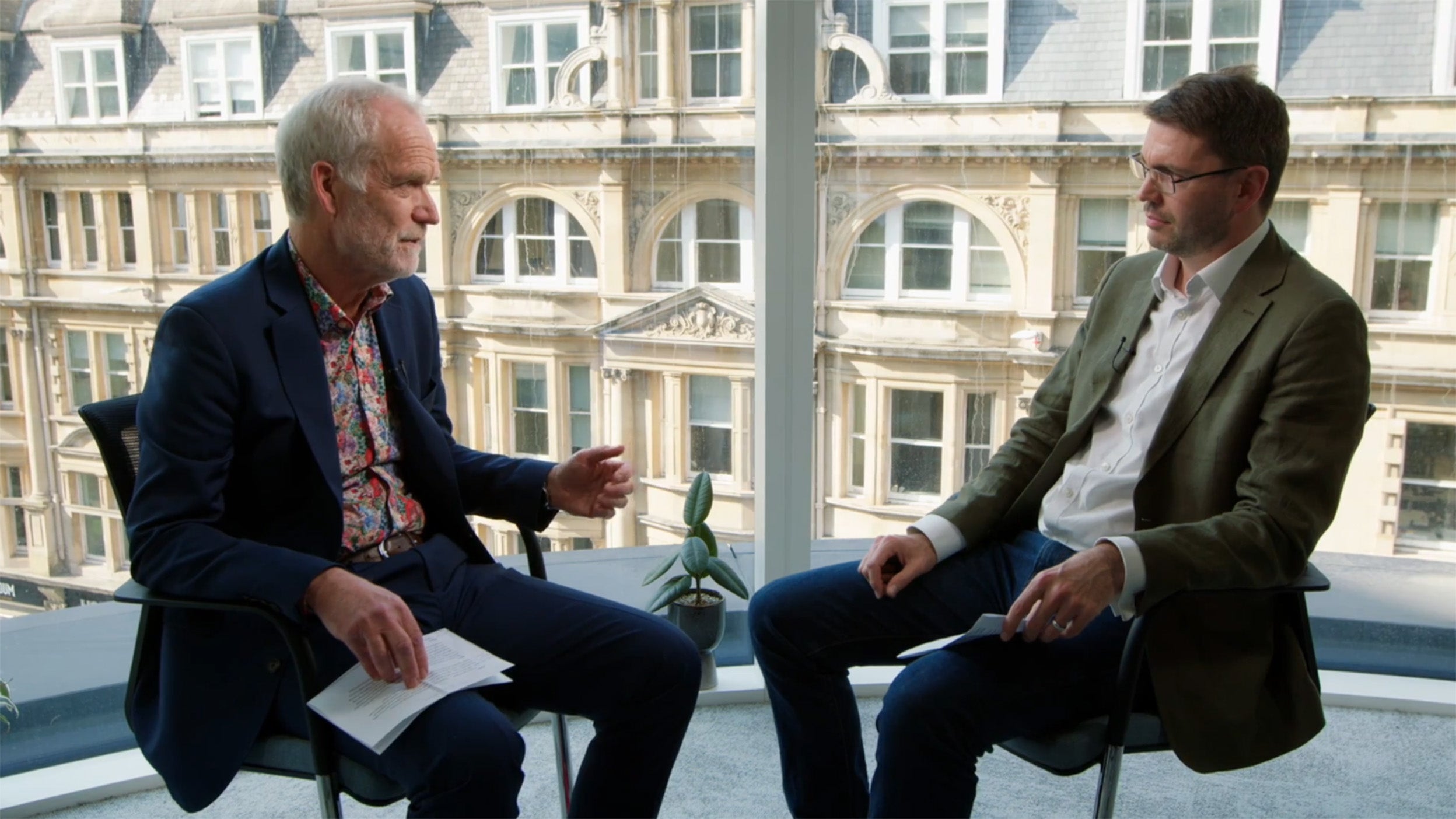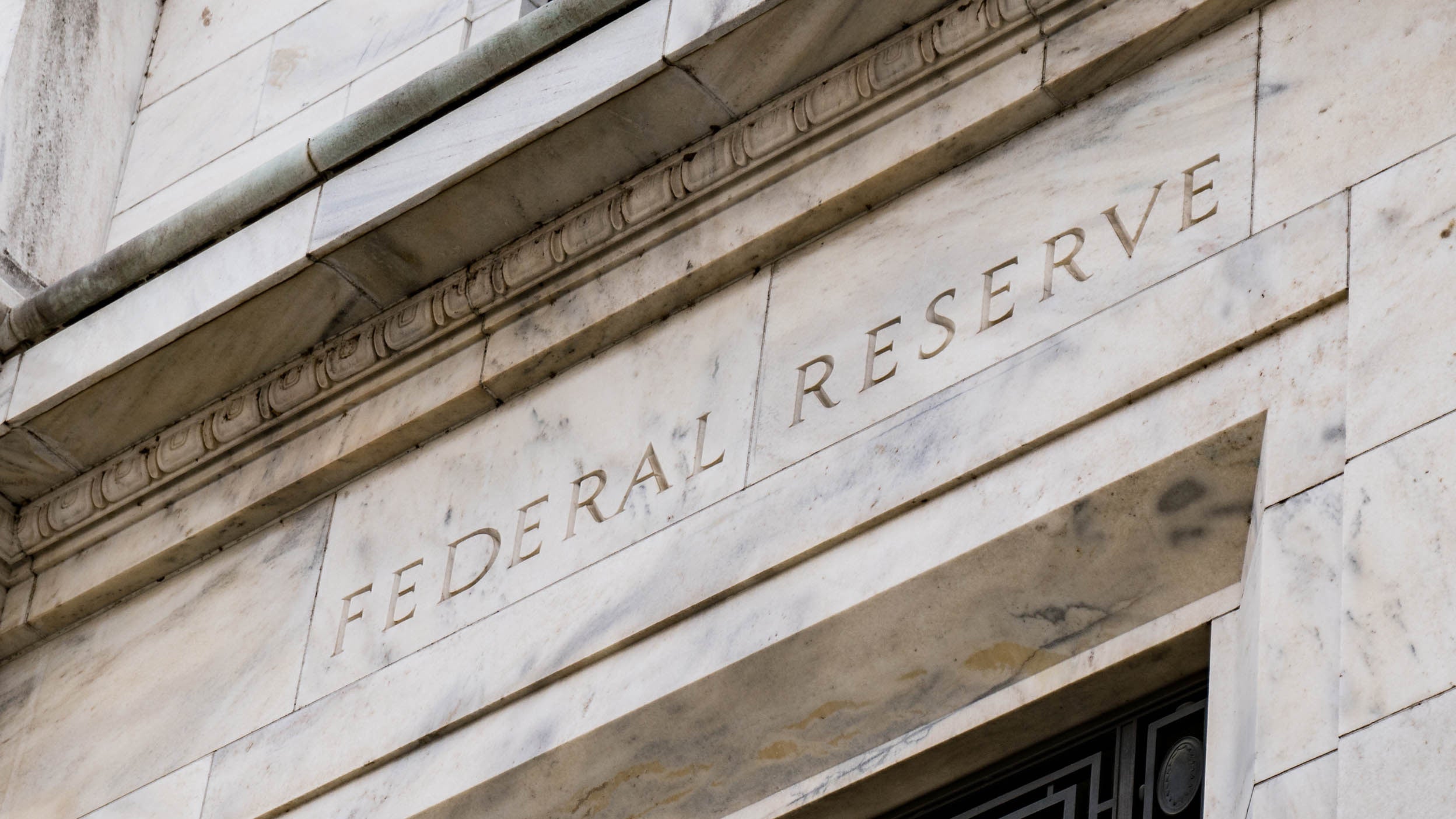
Monthly Market Roundup
In our monthly market roundup for October, Invesco experts review a mixed month for global equity markets, alongside key updates in fixed income.

After the US tariff news, investors have been diversifying their exposure across regions and holding fewer US treasuries.
We prefer floating rates in order to mitigate interest rate uncertainty. Traditional fixed-rate credit faces greater challenges.
DeepSeek has reshaped investor expectations for AI innovation and where we expect leadership to come from.
Tariff announcements and shifting government policies triggered a significant global economic reset during the first half of the year. Uncertainty soared across markets.
Our midyear outlook webinar, ‘The global reset: Investing in uncertain times,’ hosted by former CNBC anchor Geoff Cutmore, discussed how our experts are navigating these uncertain times.
Members of our investment teams — including Multi Asset, Fixed Income, European Equities, Global Equities, and Private Credit — discuss how they are uncovering major opportunities and reshaping the way they think about investing.
Read our key takeaways for the highlights and watch the webinar replay to see the full conversation. (Passages below have been edited for length and clarity.)
Benjamin Jones, Director of Macro Research: We're probably past the worst of the threatened tariffs, but rates imposed by the US are still materially higher than experienced in nearly a century.
If you ask me to put a point estimate on where tariffs are going to end up, I have no idea. No one does. But what is key is that we know that tariffs are going to be higher.
Paul Jackson, Global Head of Asset Allocation Research: The US will grow more slowly in 2025 than anticipated at the start of the year. It has always been my feeling that the US would suffer most from a trade war.
Having said that, remember that real incomes are rising and were rising before this happened. Interest rates have started to come down, and I expect they will continue to come down. There may be some tax cuts and deregulation that could help.
So, I suspect we’ll see lower growth than we have been used to from the US over the next year or two, but not a recession.
Paul: Chinese growth is quite good. If you look at recent quarters, it's been growing at around 5%, looking at GDP.
If you’re talking about tariffs of 145% being imposed by the US, that is clearly an embargo. But negotiations are ongoing, and hopefully, we fully expect tariff rates on both sides will be much lower than that threat. Equally, China has domestic policy levers available to maintain decent growth.
Europe is an interesting place in the world. What is going on in Europe? The European economies are going to benefit from a fiscal boost. Military spending is going to rise pretty much across the board in Europe. So that is going to help. The infrastructure programme that is being rolled out in Germany is going to be very important.
Ben: The consistent message that we've got running through the outlook piece is that the dollar is going to weaken this year and into 2026 at least.
That's a real meaningful change from where we've been over pretty much the last 15 years, where we've had US exceptionalism, US assets outperforming, and US dollar strength.
Alexandra Ivanova, Fund Manager in Fixed Income: What is mostly exciting for me is emerging markets. Emerging markets have historically performed well when the dollar is on the back foot, and we think that holds. That is driven by the fact that central banks can afford to be a little bit more dovish, so they can cut interest rates without the fear of their currency weakening on the back of it.
Thomas Moore, Co-Head of Fixed Income, Europe: When the whole tariff storm kicked off, treasuries sold off.
Normally, you would expect a flight to quality. Instead, investors were exiting the US and rotating into other geographies and government bonds. Investors were looking to diversify their exposure and hold fewer US assets and fewer treasuries. European government bonds have represented an interesting opportunity.
Alexandra: One thing to point out is the dispersion within credit markets. As an active investor, it's a great opportunity.
Even though credit spreads look very tight – some of the tightest we’ve seen in 20 years – there’s a lot of variation underneath the surface. Some credits are trading at very attractive levels. They might have their own idiosyncratic stories.
If you do your proper fundamental, bottom-up research and are comfortable taking that risk, you can harness double-digit yields in some cases.
Raphael Stern, Global Head of Fixed Income PM, ETF & IS: We're back to positive flows into higher-risk parts of the market. So, there have been really attractive entry points in both investment grade (IG) and high-yield broad market credit. We've seen that the bulk of the flows into targeted maturities are into euro corporates, particularly those between 2026 to 2029.
If you look at AAA-rated CLOs, we've started to see some flows in euros and in dollars into this new asset class that's now available to investors in an ETF wrapper.
Oliver Collin, Co-Head of UK and European Equities: The right decision in recent decades has been to own US stocks. In fact, just a small handful of US stocks.
Now, people are clamouring to look at European banks and for good reason. That's going to push into construction, house builders, industrials, and materials. These businesses will benefit from the tax breaks in Europe, as well as the infrastructure and defence spending.
Raman Rajagopal, Senior Client Portfolio Manager in Private Credit: Traditional credit that has significant interest rate duration exposure has become more challenged. This is due to interest rate uncertainty. We've been favourable on the floating rate portion of the market. It mitigates the most significant risk that we're living through right now, which is interest rate uncertainty.
Raman: We're hearing interest in two different ways. One is on the debt side. If you look at this asset class, particularly in the investment-grade portion, there is a very well-established opportunity.
You have had banks, Treasury departments, and the like investing in this for decades, but it has been difficult to access. Now, there are new access points coming to market.
In Europe, for example, you see the introduction of ETFs. It's a very interesting opportunity for investors who want floating-rate income.
Ashley Oerth, Associate Global Market Strategist: The release of DeepSeek really reshaped investor expectations about what we would expect from AI and where we would expect leadership to come from.
This has been both from an investment perspective but also from an innovation perspective. The US is no longer the only player in town.
John Morris, Senior Analyst: Infrastructure spend is one of the big themes and debates in the market currently because we're seeing an awful lot of capital investment.
Investors have asked: Is there a parallel to overbuilding in the dot.com bubble? That's one of the key debates in the market today. Can the infrastructure spending keep growing? Is it likely to see a levelling off or a digestion period at some point?
You can watch the replay of our webinar on-demand. Please read our full outlook.
Yes, we expect US equities to underperform over a multi-year period. Further, we expect the USD to depreciate against a broad basket of currencies over the coming years.
Investors have a range of options open to them:
Moving away from US assets is difficult due to their market size and liquidity, and therefore, FX hedging remains a practical near-term tool to manage USD risks. For many, this is a new challenge, as for much of the last decade and a half, the USD has been a diversifier and not a risk for portfolios held outside of the US.
The US health care sector outlook is heavily influenced by US policy and legislation. We are cautious on the sector mainly due to its valuations looking rich on absolute measures and at best “fair value” based on cyclically adjusted ratios.
Both the macro outlook and the regulatory outlook appear unfavourable for the sector, especially as long as the macro picture depends on US policy (mostly tariffs). Even if tariffs end up lower than announced, as seems likely, they will still be higher than before. That still implies a slowdown for the US economy, which could also limit global growth.
But tariffs are inflationary in the short term, which puts the Fed in a difficult position. We think the focus will initially be on limiting inflation, so rates and government bond yields are likely to stay high.
We consider healthcare a growth sector, so a long-duration asset whose valuations depend heavily on the discount rate used on future earnings (10-year Treasury yields are a good proxy). Therefore, high or rising rates could imply underperformance.
At the same time, tariffs could push the price of medicines higher if providers can pass these costs onto customers, which may reduce demand for certain types of treatments. They may not be able to do that, however, because the White House Administration has announced a wish to reduce the price of drugs.
This would negatively impact margins and may even reduce the development of new drugs. Research and development may be under pressure anyway if the US government does not pull back from its current policy of reducing the state funding of universities.
We would usually classify the sector as “defensive”, but regulatory uncertainty could drive underperformance even in a market pull-back, when the sector usually tends to outperform.
Yes, it is a concern for investors, particularly given that rate differentials are tighter now. Hence, using JPY as a funding currency is more expensive and therefore the barrier to unwinding a short is lower.
Also, while a lot is in the price, investor sentiment towards the USD is poorer now compared to last year. A strong downtrend amid concerns around further fiscal and political risks can exacerbate an unwinding of long USD/JPY carry trades.
If we’re comparing the risks now to the unwind from July-August last year, then there are a couple of differences worth noting. Firstly, on positioning, heading into the surprise Bank of Japan hike last August, the market had been short the JPY in the build-up in July, and there was a big unwind of the JPY carry trade to take the market long. However, on some metrics, the extent to which the market got itself long JPY were less than we are today.
Secondly, on levels, while the fundamentals have changed slightly since last year, technically, we were vulnerable in 2024 and were at the highest USD/JPY levels since 1986. Whereas now we’re about 12% off those highs in a range we’ve spent much of the last 4 years.
There are two parts to fiscal stimulus - defence spending and Germany's infrastructure plan. Both are relevant.
Banks are the conduit for getting money into the economy, and account for two-thirds of the transfer mechanism in Europe. Therefore, banks will benefit from stronger loan growth in a recovery, as they're key in supporting investment. It's a nice potential tailwind for the sector.
One shouldn’t just think about this one element in isolation, however, as other drivers are relevant. We've already had the full benefit of the rate increases, which peaked in September 2023 at 4.5%, but now sit at the critical 2%.
Short rates at 2% with a term premium are a good backdrop for banks, but we need to be mindful if rates fall further from here. At the same time, valuations have recovered a long way from the levels in 2020, before inflation returned, with the sector trading at 1.1x price to book (P/B) versus 0.4x back then. Therefore, today, we’re still overweight but less so than before 2020.
The options for UK retail investors to access private markets broadly, inclusive of private credit, have been relatively limited.
Our view is that improving access to private markets for retail investors, being mindful of appropriate investor understanding of the investments, liquidity parameters, and risks, could be extremely beneficial to portfolios.
The recent trends around Long Term Asset Funds (LTAF) and other vehicles we believe could improve these access points over time, and Invesco is actively engaging with leading LTAF platforms in the space to help provide compelling options.
Corporate loans to private equity-owned companies can be executed in a variety of different lending instruments, but are often done via senior secured floating-rate loans.
While these loans would typically be considered sub-investment grade (even where they are not formally rated), significant risk mitigations exist for loan investors. These loans are typically senior secured, which means they sit at the top of the capital structure and therefore enjoy priority claim in the event of a default/restructuring.
Additionally, corporate loans typically have significant equity (e.g. 40- 50% +) beneath them in addition to other protections, which further help mitigate risk in the positions.
Comparing these loans to the risk of sovereign debt will be highly dependent on the risk of the sovereign. For investment-grade sovereigns, loans to private equity firms would typically be considered to carry a higher default risk.
That said, please note that corporate loans are typically floating-rate, and therefore, in times of significant interest rate uncertainty, can certainly result in a more resilient experience as rate expectations more significantly impact longer duration investments.

In our monthly market roundup for October, Invesco experts review a mixed month for global equity markets, alongside key updates in fixed income.

Federal Reserve Chair Jerome Powell’s dovish tone at Jackson Hole last week had ramifications for rate expectations, tech stocks, and the US dollar.

Welcome to Applied philosophy, our view on global equity market model sector allocation.